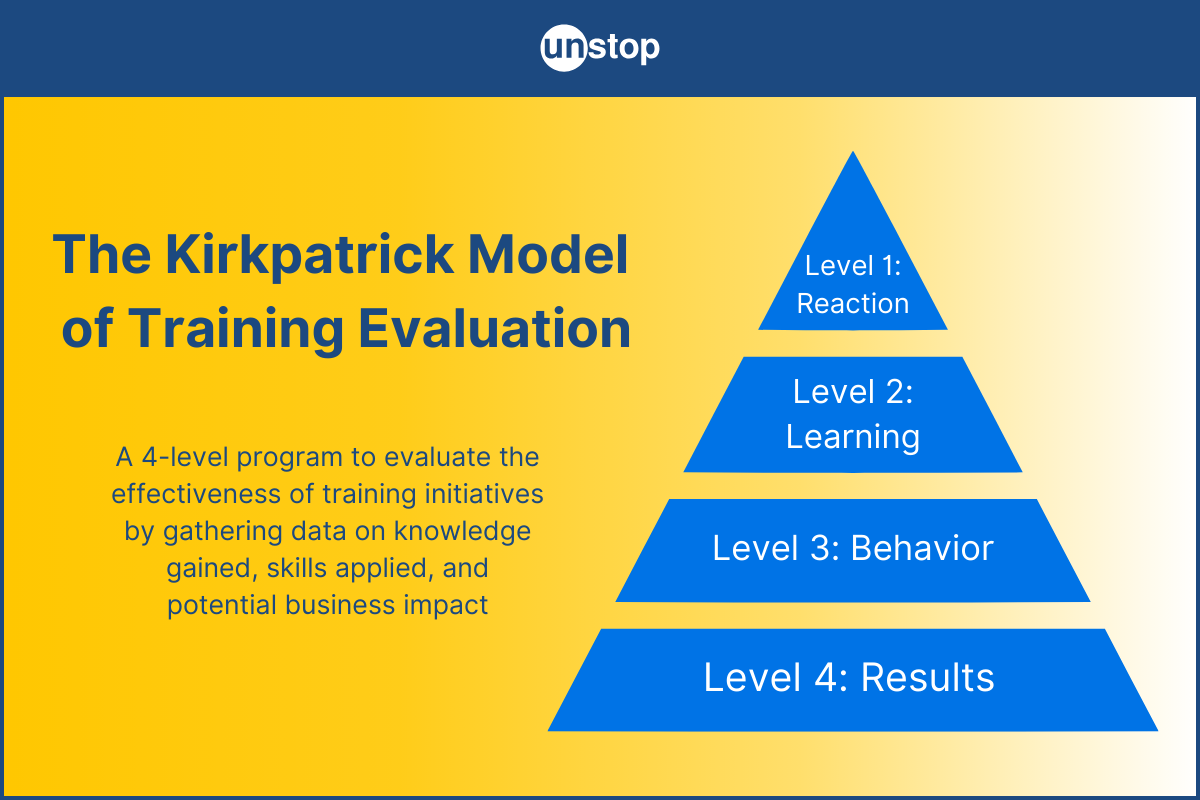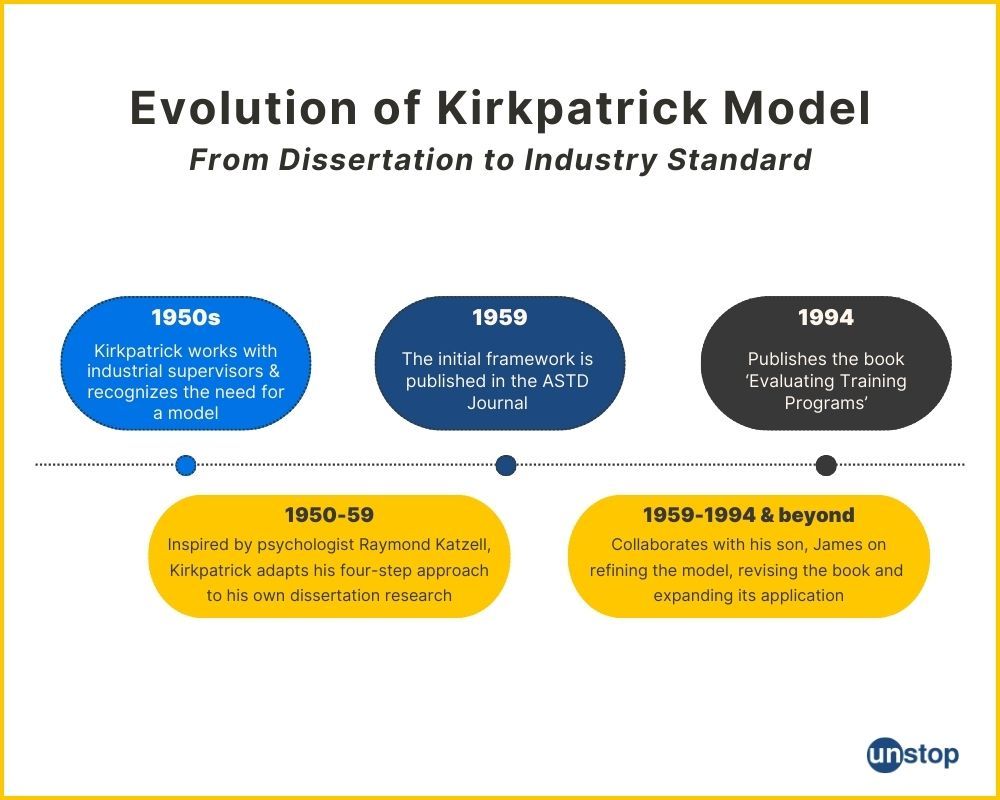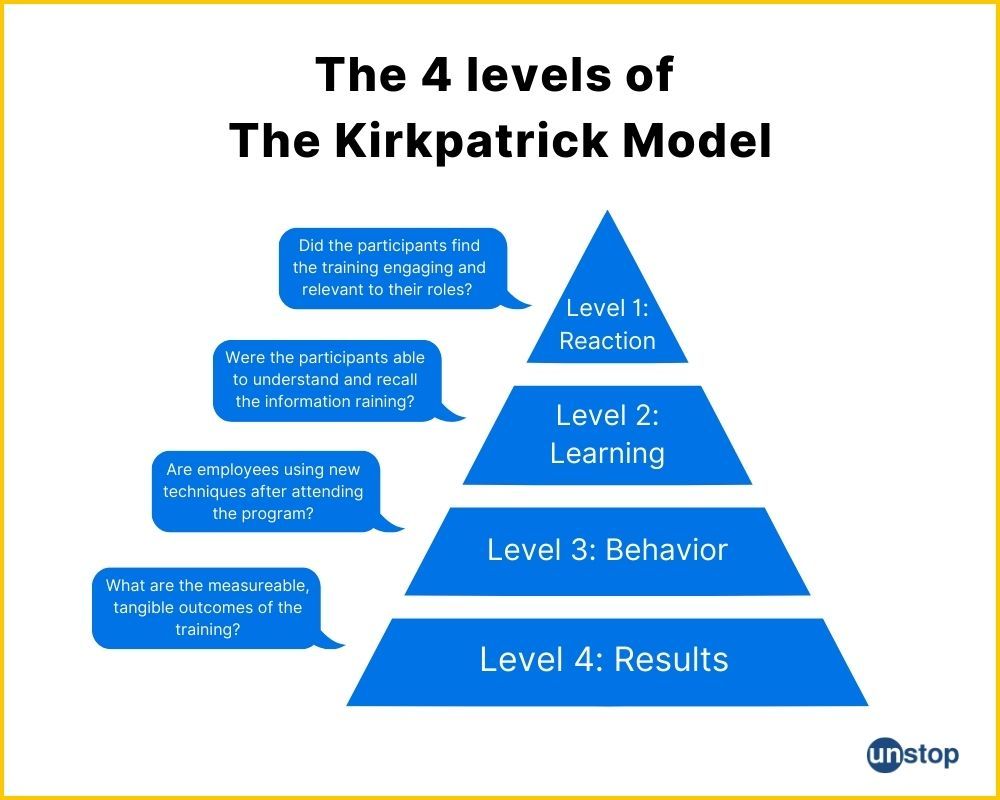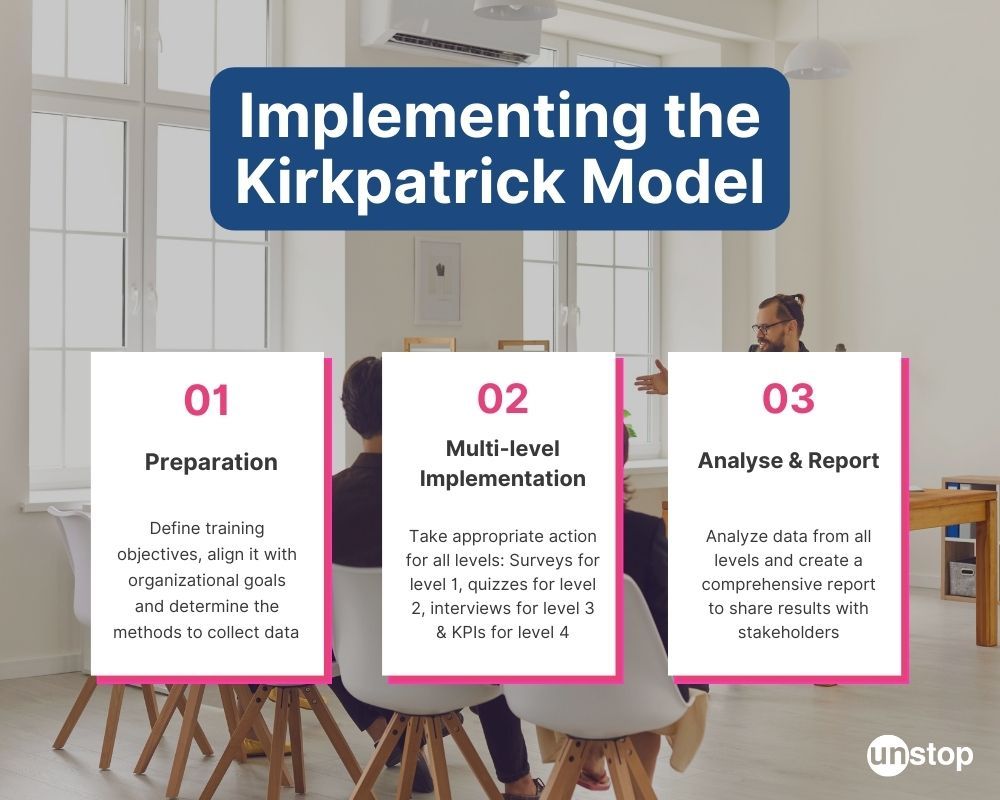- What is Human Resource Management (HRM)?
- Importance of HRM in an Organization
- What are the key Objectives of HRM?
- What are the main functions of HRM?
- Scope of HRM in an Organization
- Role Of HRM in an Organization
- Technology Integration & Future Trends in HRM
- Career Paths In Human Resource Management
- Conclusion
- Frequently Asked Questions (FAQs)
- Simulation Training: Understanding the Concept
- Evolution of Training Methodologies
- Benefits of Simulation Training
- Implementing Simulation Training in Organizations
- Future Simulation Training Trends
- Summing Up
- Frequently Asked Questions
- What do you mean by Performance Appraisal?
- Purpose & Objective of Performance Appraisal
- Types of Performance Appraisal
- Methods of Performance Appraisal: Benefits & Drawbacks
- Understanding the Working of Performance Appraisal
- Benefits of Performance Appraisal with Examples
- Criticisms & Limitations Of Performance Appraisal
- Conclusion
- Frequently Asked Questions (FAQ)
- Job Analysis: Definition & Importance
- Job Analysis: Key Components
- Identifying The Right Moment For Job Analysis
- Navigating Job Analysis Process
- Distinguishing Job Analysis & Evaluation
- Using The Findings Of Job Analysis
- Conclusion
- Frequently Asked Questions (FAQs)
- Deciphering Training & Development
- Difference Between Training, Development & Learning
- Significance Of Training & Development In HRM
- Benefits Of Training & Development For Organizations
- Types & Methods Of Employee Training
- Building Blocks Of Training Programs
- Trends & Innovation In Employee Training
- Strategic Integration With Talent Management
- Addressing Challenges In Training & Development
- Frequently Asked Questions (FAQs)
- Understanding Strategic Human Resource Management
- Scope Of Strategic Human Resource Management
- Creating A Strategic HR Plan In 7 Steps
- Different Approaches To Strategic Human Resource Management
- Importance Of Strategic Human Resource Management
- Characteristics Of Strategic Human Resource Management
- Frequently Asked Questions (FAQs)
- What is Selection Procedure in HRM?
- Stages Of Selection Procedure In HRM
- Making Informed Decisions With Job Offers
- Onboarding Strategies For New Hires
- Best Practices In Selection Procedure
- Conclusion
- Frequently Asked Questions (FAQs)
- Definition Of Human Resource Planning
- Understanding The Essence Of Human Resource Planning
- Key Objectives & Importance Of Human Resource Planning
- Strategic Alignment Of Human Resource Planning
- Core Steps Involved In Human Resource Planning Process
- Analyzing Labor Market Dynamics
- Tools & Techniques For Human Resource Planning
- Common Challenges & Solutions In Human Resource Planning
- Future Trends Influencing Human Resource Planning
- Measuring Success & Progress In Human Resource Planning
- Frequently Asked Questions (FAQs)
- Concept & Purpose Of Job Evaluation
- Overview Of Job Evaluation Methods
- Importance Of Implementing A Job Evaluation System
- Steps To Conduct A Thorough Job Evaluation
- Selecting Appropriate Method For Job Evaluation
- Establishing Job Evaluation Committee
- Advantages & Limitations Of Job Evaluation Techniques
- Maintaining & Updating Job Evaluation Process
- Frequently Asked Questions (FAQs)
- What is Training Needs Analysis?
- Purpose of Training Needs Analysis
- What are the Types of Training Needs Analysis?
- 7 Key Steps to Conduct Training Needs Analysis
- Methods of Data Collection for TNA
- What are the Benefits of Training Needs Analysis?
- Conclusion
- Frequently Asked Questions (FAQ)
- Types of Training Methods
- On-the-Job Training Methods (Learning by Doing)
- Off-the-Job Training Methods (Structured Learning)
- Microlearning & Mobile Learning
- Peer-to-Peer & Self-Directed Learning
- Choosing The Right Method
- Traditional Vs Modern Training Techniques
- Evaluating The Different Types Of Training Methods
- The Future of Training
- Conclusion
- Frequently Asked Questions (FAQs)
- What is Job Design in HRM?
- Methods of Job Design: Key Strategies
- The Impact of Taylorism on Job Design
- Hackman and Oldham Model or the Job Characteristics Model
- Socio-Technical Systems and Job Design
- The Job Design Process: Best Practices
- Things to Keep in Mind for an Effective Job Design Process
- Conclusion
- Frequently Asked Questions (FAQs)
- What is Training?
- What is Development?
- Core Differences Between Training and Development
- Similarities Between Training and Development
- Why This Difference Matters: Strategic Implications
- Importance of Training and Development
- Common Pitfalls of Confusing Training and Development
- Integrating Training and Development for Holistic Growth
- Frequently Asked Questions (FAQs)
- Key Challenges in Human Resource Management
- Addressing HRM Challenges Globally
- Legal and Regulatory Compliance in HRM
- Enhancing Productivity in HRM
- HRM Challenges in India
- Strategic Role of HR Leaders
- Technological Advancements in HRM
- Diversity and Inclusion in the Workplace
- Conclusion
- Frequently Asked Questions
- What do You Mean by Sources of Recruitment?
- Internal Sources of Recruitment
- Advantages & Disadvantages of Internal Sources of Recruitment
- External Sources of Recruitment
- Advantages & Disadvantages of External Sources of Recruitment
- Key Differences Between Internal & External Sources of Recruitment
- Innovative Recruitment Channels in the Digital Era
- Conclusion
- Frequently Asked Questions
- Want to Source Right & Optimize Your Recruitment Process?
- What is Human Capital?
- Human Capital Theory Explained
- Human Capital and Economic Growth
- Measuring Human Capital
- Human Capital Formation
- Human Capital Management Strategies
- Role of Education in Human Capital Formation
- Critiques of Human Capital Theories
- Future of Human Capital in Business
- Conclusion
- Frequently Asked Questions
- What is Wage?
- Types of Wages
- What is Minimum Wage?
- What is EPF Wage?
- What is the Differential Wage Rate?
- What is Real Wage?
- What is a Living Wage?
- Theories of Wages
- Factors That Affect Wages
- How Are Wages Calculated? (Formula to Calculate Wage)
- Key Differences Between Wages Vs. Salary
- Conclusion
- Frequently Asked Questions (FAQs)
- Definition Of Training Evaluation
- Understanding Training Evaluation Models
- Different Types Of Training Evaluation Methods
- Importance & Benefits Of Training Evaluation
- Formative Vs Summative Training Evaluation
- Creating An Effective Training Evaluation In Simple Steps
- Strategies For Employee Training Evaluation
- CIPP & Kaufman's Models In Training Evaluation
- Measuring & Analyzing Training Outcomes
- Best Practices For Conducting Training Evaluation
- Frequently Asked Questions (FAQs)
- What is Wage and Salary Administration in HRM?
- Importance of Wage and Salary Administration
- Objectives Of Wage & Salary Administration
- Principles Of Wage & Salary Administration
- Factors Influencing Wage & Salary Levels
- Frequently Asked Questions (FAQ)
- Meaning Of HR Professional
- Role Of An HR Professional
- Essential Skills Of Successful HR Professionals
- Effective Communication In HR Professionals
- Decision-Making & Problem-Solving In HR Professionals
- Frequently Asked Questions (FAQs)
- Definition & Evolution Of HRMS
- Understanding The Core Functionalities Of HRMS
- Key Features & Components Of HRMS
- Benefits & Importance Of Implementing HRMS
- Security Measures & Data Protection In HRMS
- Role Of Artificial Intelligence In HRMS
- Choosing The Right HRMS For Your Organization
- Frequently Asked Questions (FAQs)
- Definition Of Job Characteristics Model
- Hackman And Oldham Job Characteristics Model
- Five Core Job Characteristics Model Explained
- Psychological States & Work Outcomes in JCM
- Autonomy & Role In Job Satisfaction
- Task Significance
- Impact Of Feedback On Job Performance
- Factors Influencing The JCM's Effectiveness
- Practical Implications For SEO Content Writing
- Frequently Asked Questions (FAQs)
- Definition Of Executive Compensation
- Basics Of Executive Compensation
- Key Components Of Executive Compensation
- Purpose Of Compensation Packages
- Role Of Executive Compensation
- Types & Structures Of Executive Compensation Plan
- Short, Medium & Long-Term Compensation
- Trends & Regulations
- Best Practices For Executive Compensation
- Corporate Strategy & Governance
- Controversies & Criticisms
- Frequently Asked Questions (FAQs)
- Defining Employee Relations
- Importance Of Employee Relations Management
- Strategies For Effective Employee Relations
- Role Of An Employee Relations Specialist
- Resolving Workplace Disputes & Conflicts
- Addressing Wage Concerns & Policy Clarification
- Legal Compliance & Employee Relations Management
- Frequently Asked Questions (FAQs)
- What is International Human Resource Management?
- Objectives of International HRM
- Functions of International HRM
- Models of International HRM
- Strategies For Effective IHRM Implementation
- Key Differences Between IHRM and Domestic HRM
- Challenges in International HRM
- Frequently Asked Questions (FAQs)
- Importance Of Executive Development In HRM
- Methods Of Executive Development
- Objectives Of Executive Development
- Importance & Benefits Of Individualized Development Programs
- Frequently Asked Questions (FAQs)
- Defining Personnel Management & Objectives
- Key Functions Of Personnel Management
- Roles & Duties Of A Personnel Manager
- Personnel Management Vs. HRM
- Approaches & Policies In Personnel Management
- Manpower Planning, Recruitment & Selection Processes
- Training & Development Within Personnel Management
- Analysing Current Trends In Personnel Management
- Frequently Asked Questions (FAQs)
- What do you mean by Job Evaluation?
- What Are the Importance of Job Evaluation Methods?
- Best 7 Job Evaluation Methods in HRM
- Role Of Market Pricing In Job Evaluation
- Advantages & Disadvantages Of Job Evaluation Methods
- Career Progression, Legal Considerations & Compliance
- Best Practices For Job Evaluations
- Conclusion
- Frequently Asked Questions (FAQs)
- What is Personnel Management (PM)?
- What is Human Resource Management (HRM)?
- Similarities Between Personnel Management & HR Management
- Elaboration on Key Evolutionary Shifts
- Emerging Trends in Modern Human Resource Management
- Frequently Asked Questions (FAQs)
- Introduction to Kirkpatrick Model
- Origin & Evolution of the Kirkpatrick Model
- Importance of the Kirkpatrick Model
- Implementing the Kirkpatrick Model Training Evaluation
- Measuring Reaction: The First Level of Evaluation
- Assessing Learning: The Second Level Explained
- Evaluating Behavior Change: The Third Level of Impact
- Analyzing Results: The Fourth Level of Training Effectiveness
- Balancing Limitations in the Kirkpatrick Model
- Final Remarks
- Frequently Asked Questions (FAQs)
- Exploring The Concept Of Salary
- Key Differences Between Wages And Salary
- Types Of Wages & Their Impact on Earnings
- Varieties Of Salary Structures
- Advantages Of Earning Wages
- Benefits Of Receiving A Salary
- Legal Distinctions In Wage & Salary
- Overtime Compensation In Wage & Salary
- Frequently Asked Questions (FAQs)
- Fringe Benefits Meaning & Objectives
- Examples & Types Of Fringe Benefits
- Necessity Of Fringe Benefits By Law
- Tax Implications For Various Fringe Benefits
- Valuing & Calculating Fringe Benefits
- Role Of Cafeteria Plans In Fringe Benefits
- Impact Of Fringe Benefits On Employees
- Business Impact Of Fringe Benefits
- Considerations In Offering Fringe Benefits
- Conclusion
- Frequently Asked Questions (FAQs)
- What Is HR Compliance & Importance
- Key Elements Of An HR Compliance Checklist
- Managing HR Compliance In The Workplace
- Conducting An Effective HR Compliance Audit
- Overcoming Challenges In HR Compliance
- Automation For Streamlined HR Compliance
- Best Practices For Enforcing HR Compliance
- Long-term Data Governance In HR Compliance
- Frequently Asked Questions (FAQs)
- What is Recruitment Process In HRM?
- 5 Essential Stages of Recruitment & Selection Process
- Identifying Vacancies & Crafting Effective Job Descriptions
- Job Portals, Social Media & Technology in Recruitment
- Internal Vs External Sources of Recruitment
- Strategies for effective Recruitment in HRM
- Psychometric Tests used in Recruitment
- Conclusion
- Frequently Asked Questions (FAQs)
Kirkpatrick Model Of Training Evaluation: A Guide To Implementing The 4 Levels

In the realm of corporate training and development, measuring the effectiveness of educational programs is pivotal for ensuring that investments in learning yield tangible benefits. Enter the Kirkpatrick Model, a comprehensive framework designed to evaluate the impact of training initiatives across four distinct levels.
This article aims to unpack the Kirkpatrick Model, guiding readers through its four-level approach -from gauging participants' reactions all the way to measuring the ultimate impact on organizational performance.
Introduction to Kirkpatrick Model
The Kirkpatrick Model of training evaluation, as the name suggests, is a way to assess the effectiveness of training programs. By understanding and implementing this model, educators, trainers, and human resource professionals can gain deeper insights into how training programs influence individual growth, behavior change, and contribute to strategic organizational goals.
It's not enough to simply introduce different training programs. It's also important to analyze how employees are responding to a training initiative. Kirkpatrick Model, with its four-level framework, is one of the most comprehensive methods to assess training effectiveness.
Origin & Evolution of the Kirkpatrick Model
The Kirkpatrick model is widely embraced in the realm of training and development due to its versatility and comprehensiveness. Its multi-dimensional nature allows organizations to assess not only participants' reactions but also learning, behavior change, organizational results, and even societal impact.
How did the Kirkpatrick Model develop?

Donald Kirkpatrick developed the Kirkpatrick model in the 1950s. The 4-level evaluation model’s emphasis on measuring outcomes and demonstrating value remains a cornerstone of effective training evaluation practices.
Donald Kirkpatrick's development of the Kirkpatrick Model wasn't a single eureka moment, but rather a gradual evolution spanning his early career:
- Recognizing the Need: While working with industrial supervisors in the 1950s, Kirkpatrick saw firsthand the need for a systematic way to assess the effectiveness of training programs. Existing methods often relied on subjective feedback and lacked a strong link to business outcomes.
- Drawing Inspiration: He was influenced by the work of industrial-organizational psychologist Raymond Katzell, who emphasized the importance of measuring behavior change as a key indicator of learning effectiveness.
- Building the Framework: Kirkpatrick adapted Katzell's four-step approach (Satisfaction-Acquisition-Application-Impact) to his own dissertation research on evaluating supervisory training. These steps later evolved into the four levels of the Kirkpatrick Model - Reaction, Learning, Behavior and Results.
- Refinement and Publication: After further validation and application, Kirkpatrick published his initial framework in the American Society for Training and Development (ASTD) Journal in 1959. Subsequent editions of his book "Evaluating Training Programs" (1994) continued to refine and evolve the model based on practical experience and feedback.
- Collaborative Work: While Donald Kirkpatrick is often credited with the model, it's important to acknowledge the contributions of his son, James Kirkpatrick, who collaborated with him on revisions and expanded its application in the training industry.
Understanding the Levels of Kirkpatrick Model of Evaluation

Here’s how the four levels of the Kirkpatrick Model of evaluation function:
- Level 1: Reaction (originally "Satisfaction") - The first level evaluates participants' immediate reactions to the training experience. Did they find it engaging? Was it relevant to their roles?
- Level 2: Learning (originally "Acquisition") - The second level assesses what knowledge or skills were acquired during the program. Were the participants able to understand and recall the information and techniques presented in the training?
- Level 3: Behavior (originally "Application") - At level three, organizations gauge whether there was any behavioral change as a result of the training. For example, did employees start using new techniques or processes after attending the program?
- Level 4: Results (originally "Impact") - The final level where organizations measure tangible outcomes resulting from the training - improved productivity, increased sales figures, or enhanced customer satisfaction.
Donald Kirkpatrick: The Man Behind The Model

Image credits: Kirkpatrick Partners
Donald Kirkpatrick is considered the "father of modern training evaluation" for his significant contributions to measuring and demonstrating the value of training in organizations.
Kirkpatrick earned a Ph.D. in Industrial Psychology from the University of Wisconsin-Madison and spent most of his career at the Management Institute there. He also served as president of the American Society for Training and Development (ASTD) in 1970.
His interest in training evaluation stemmed from his experience working with industrial foremen and supervisors, where he realized the need for a tool to gauge the impact of training programs.
Kirkpatrick also authored several books on training evaluation, including the acclaimed "Evaluating Training Programs" (1994). He actively championed the importance of training evaluation throughout his career, promoting its role in demonstrating the ROI (Return on Investment) of training initiatives.
Importance of the Kirkpatrick Model
With this framework, companies can measure the efficiency of their training initiatives across different levels. One benefit of this model is its structured approach - by considering various aspects such as reaction and results, organizations can better invest in employee development programs.
Another advantage is its adaptability across different types of training - whether for technical skills development or soft skills enhancement. Moreover, by focusing on both qualitative (reactions) and quantitative (results) data collection methods, this model allows for a more holistic assessment process.
The Kirkpatrick model is also highly beneficial as it emphasizes comprehensive evaluation of training programs. This means that it doesn't just focus on one aspect but rather considers multiple levels of assessment. For instance, it looks at reactions, learning, behavior change, and overall results.
Implementing the Kirkpatrick Model Training Evaluation

The Kirkpatrick Model is a flexible framework that can be adapted to fit a specific training program, context, and resources. Here's a breakdown of the steps involved in its implementation:
Preparation:
- Define training objectives: Clearly state what participants should know and be able to do after the training. Be specific and measurable.
- Align evaluation methods: Choose assessment methods that directly map to your learning objectives. Consider various types of questions, simulations, and performance observations.
- Determine data collection methods: Decide how you will collect data for each level (surveys, tests, observations, etc.). Ensure confidentiality and ethical data collection practices.
Implementation:
- Level 1 - Reaction: Gather feedback during or immediately after the training by using surveys or open-ended questions to assess participants' reactions to the content, instructor, and overall experience.
- Level 2 - Learning: Conduct pre- and post-training assessments through tests, quizzes, or simulations to measure knowledge and skills before and after the training. Analyze the difference to gauge learning gains.
- Level 3 - Behavior: Observe the on-the-job performance of the participants and collect feedback from supervisors, colleagues, or clients to assess changes in observed behavior and performance.
- Level 4 - Results: Identify relevant organizational metrics that align with training objectives and organizational goals, and then compare data before and after the training to see if there's a positive impact on these metrics.
Point to note! Always consider external factors. Acknowledge that other factors besides training might influence these metrics, so isolate the training's impact if possible.
Reporting and Analysis:
- Analyze data from all levels: Compile and interpret findings from each level, identifying strengths, weaknesses, and areas for improvement.
- Create a comprehensive report: Highlight key insights and recommendations for future iterations of the training in a clear, concise manner.
- Share results with stakeholders: Communicate your findings to decision-makers, trainers, and participants to inform future training development and resource allocation.
Pro Tip! Pilot test the assessments and get feedback from participants and stakeholders on the evaluation experience to improve future processes.
Let’s now understand each level of the model in detail.
Measuring Reaction: The First Level of Evaluation

Image credit: Freepik
The first level involves assessing the satisfaction and engagement of those who have undergone training programs.
How to do it?
By utilizing surveys and feedback forms, trainers can gather valuable data regarding participants' experiences and perceptions.
For example, they may ask about the relevance of the training content, the effectiveness of instructional methods, and overall satisfaction with the program.
Why do it?
Core objective: Gathering this information provides insight into whether the participants found the training engaging, informative, or beneficial. Understanding participant satisfaction is crucial for organizations to gauge if their training initiatives are meeting expectations.
Additional benefit: By analyzing participant feedback and survey responses, trainers can pinpoint specific aspects that require enhancement.
For instance, if a significant number of participants express dissatisfaction with certain modules or activities, it signals a need for adjustments in those areas.
Assessing Learning: The Second Level Explained
The Kirkpatrick Model's second level, assessing learning, focuses on measuring the knowledge acquisition and skill development of the learners.
How to do it?
- Quizzes & Tests: In this level of evaluation, quizzes serve as an efficient tool for testing factual knowledge retention, while tests evaluate a more comprehensive understanding of concepts. By using these assessment methods, trainers can gain insights into areas where learners excel or struggle.
- Observations: Observations also come into play when assessing practical skills that cannot be evaluated through traditional written tests. Trainers are able to assess learners' abilities to apply newly acquired skills in real-life situations by observing them.
For example, an educational institution might assess students' language proficiency not only through written exams but also through oral presentations or conversations with native speakers.
Why do it?
Core Objective: This is crucial in determining whether the training or learning program has been effective in imparting new knowledge and improving skills.
Additional Benefit: Assessments provide tangible evidence of knowledge acquisition and skill development among learners. For instance, a company conducting customer service training might utilize pre- and post-training assessments to measure how much product knowledge its employees have gained during training and how effectively they can handle customer inquiries.
Evaluating Behavior Change: The Third Level of Impact

Image credit: Freepik
It’s one thing to acquire a new skill, but if the new skill can’t be applied in a real-world setting, then it’s not beneficial for the employees of the organization. This is exactly what the third level helps evaluate - application in real-world scenarios.
How to do it?
- Conducting interviews with both employees and their supervisors provides valuable insights into the practical application of training outcomes. For instance, a manager may notice that the trained employee has become more collaborative and proactive in team projects after participating in a leadership development program.
- Collect self-reported data: Surveys or interviews can be used to ask participants about how they're applying their learnings on the job and any perceived changes in their behavior.
- Performance Evaluations: Performance evaluations provide concrete data on an individual's ability to demonstrate new behaviors or skills within the workplace setting. This can help supervisors identify which areas employees have mastered and which need further development.
Why do it?
Core objective: The Kirkpatrick Model's third level emphasizes the critical link between learning outcomes and real-world applications within organizational settings. Through careful observation, insightful interviews, and thorough performance evaluations, trainers can gain a comprehensive understanding of how individuals integrate new behaviors into their daily work routines.
Analyzing Results: The Fourth Level of Training Effectiveness
The Kirkpatrick model further explores training effectiveness at the fourth level, which focuses on the impact of training on organizational objectives. This level assesses how well the training aligns with and contributes to the broader objectives of the organization.
How to do it?
By utilizing key performance indicators (KPIs) for assessment, professionals can gauge whether the training has positively influenced critical areas such as productivity, customer satisfaction, or cost reduction.
Professionals collect valuable data to determine if there is a correlation between the new skills learned during training and improvements in specific job processes or outcomes. For instance, they might analyze how supervisors' leadership style after undergoing management development programs directly impacts employee performance metrics.
Why do it?
Core objective: The fourth level provides insights into the overall effectiveness of training efforts by analyzing business results. It allows organizations to measure tangible outcomes resulting from their investment in employee development initiatives.
Balancing Limitations in the Kirkpatrick Model
The Kirkpatrick Model, while widely used and valuable, has its limitations:
- Focus on individual impact: It primarily focuses on measuring the individual learner's knowledge, skills, and behavior changes. This might not capture the broader organizational context and how various factors influence training effectiveness.
- Challenges in measuring Level 3 and 4: Accurately assessing on-the-job behavior change (Level 3) and organizational impact (Level 4) can be challenging due to external factors and personal biases.
- Limited consideration of participant motivation: The model doesn't explicitly address participant motivation and its role in learning and behavior change. Factors like personal goals and work environment can significantly impact the application of learned skills.
- Limited guidance on action steps: While the model identifies areas for improvement, it doesn't offer specific action plans for addressing them. Additional frameworks or tools might be needed to translate evaluation findings into concrete development steps.
- Not suitable for all types of training: The Kirkpatrick Model might not be appropriate for all types of training, particularly those focused on softer skills or personal development where behavior change may be less measurable.
Safeguard against the limitations
Organizations can adopt a few safeguards and best practices to balance against these limitations:
- Consider Organizational Context: While assessing individual learning is important, don't neglect the organizational context. Analyze factors like leadership support, work environment, and resource availability that influence behavior change.
- Use Multiple Data Sources: Combine quantitative data (e.g., performance metrics) with qualitative data (e.g., interviews, observations) to gain a more comprehensive understanding of training impact.
- Pilot Test and Validate: Make sure your evaluation tools and methods are accurate and bias-free by pilot testing them.
- Track Long-Term Impact: Consider long-term follow-up assessments to track the sustained impact of training on individuals and the organization.
- Train to Minimize Bias: Train data collectors, use robust research methods, and consider potential sources of bias to ensure objective evaluation results.
Final Remarks
The Kirkpatrick Model offers a comprehensive framework for evaluating training program effectiveness. By assessing reaction, learning, behavior change, and results, organizations can improve the impact of their training initiatives.
However, it’s important to adapt its application to suit specific organizational needs. Continuously refining measurement strategies and embracing a thoughtful and dynamic approach to evaluation will enhance the quality of training programs and foster a culture of continuous learning and development.
Time For A Short Quiz
Frequently Asked Questions (FAQs)
Q1. What is the Kirkpatrick Model of evaluation?
The Kirkpatrick Model, developed by Donald L. Kirkpatrick, is a widely used framework for evaluating training effectiveness. Originating in the 1950s, it has evolved to encompass four levels of evaluation: reaction, learning, behavior change, and results.
Q2. How can the Kirkpatrick Model be implemented in training programs?
The model can be implemented by first assessing participants' reactions to the training (Level 1), followed by measuring their learning (Level 2). Subsequently, behavior change (Level 3) and overall results (Level 4) are evaluated to determine the program's effectiveness.
Q3. What does Level 1 of the Kirkpatrick Model involve?
Measuring reaction at Level 1 involves gathering feedback from participants regarding their satisfaction with the training program. This includes their perceptions of relevance, engagement levels, and whether they found it beneficial.
Q4. How is behavior change assessed in Level 3 of the Kirkpatrick Model?
Evaluating behavior change at Level 3 entails observing participants’ application of newly acquired knowledge and skills in their work environment. It aims to determine if there have been tangible changes in job performance as a result of the training.
Q5. What are some benefits and limitations associated with using the Kirkpatrick Model?
The model offers clear guidelines for evaluating training impact across multiple dimensions. However, challenges may arise when attempting to quantify certain intangible aspects, such as behavioral changes or attributing specific outcomes solely to training efforts.
Suggested Reads:
I’m a reader first and a writer second, constantly diving into the world of content. If I’m not writing or reading, I like watching movies and dreaming of a life by the beach.
Login to continue reading
And access exclusive content, personalized recommendations, and career-boosting opportunities.
Subscribe
to our newsletter
















Comments
Add comment